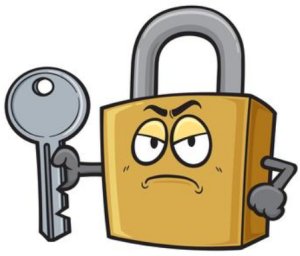Digital Solutions - St. Joseph's College, Gregory Terrace
 Vigenère Cipher
Vigenère Cipher
Background
First described by Giovan Battista Bellaso in 1553, the cipher is easy to understand and implement, but it resisted all attempts to break it until 1863, three centuries later. This earned it the description le chiffre indéchiffrable (French for 'the indecipherable cipher'). Many people have tried to implement encryption schemes that are essentially Vigenère ciphers. In 1863, Friedrich Kasiski was the first to publish a general method of deciphering Vigenère ciphers. In the 19th century the scheme was misattributed to Blaise de Vigenère (1523–1596), and so acquired its present name. (thx wiki). Hack it here
The Vigenère cipher is "related" to the Caesar cipher, but because it uses a number of substitutions (2 or more), it is technically a "POLYALPHABETIC Cipher.
The "key" is a phrase that both the sender and receiver knows.
The "Tableau" (2 character lookup table) that a Vigenère cipher uses can be envisaged as follows:

Example:
| ClearText: | W | E | A | T | T | A | C | K | A | T | D | A | W | N | |||
|---|---|---|---|---|---|---|---|---|---|---|---|---|---|---|---|---|---|
| Key: | A | L | E | R | T | A | L | E | R | T | A | L | E | R | T | A | L |
| CipherText | W | P | R | M | Y | L | G | B | A | E | U | T | W | Y |
As keylength goes up, the number of possible substitutions needed to be brute-force checked skyrockets:

stolen from Tutorials Point
Let's try it out:
Algorithm
#Thanks Greg Egan for the Pseud starter BEGIN SET cryptText='' SET keyIndex = 0 SET alphabet = 'ABCDEFGHIJKLMNOPQRSTUVWXYZ' INPUT mode INPUT upcase(message) INPUT upcase(key) SET keyLength = length of key FOR each char in message: IF char not in alphabet THEN CALCULATE cryptText += char ELSE SET letterPos = position of char in alphabet SET keyChar = key[keyIndex] SET keyPos = position of keyChar in alphabet IF mode = 'encrypt' THEN CALCULATE newIndex = (letterPos + keyPos) mod 26 ELSE CALCULATE newIndex = (letterPos - keyPos) mod 26 ENDIF CALCULATE keyIndex = (keyIndex + 1) mod keyLength SET cryptText += alphabet[newIndex] ENDIF ENDFOR PRINT cryptText END
Variations
It seems both the Gronsfeld and Beaufort ciphers are variations of Vigenère - read a paper I stole from https://www.nku.edu/~christensen/092hnr304%20Gronsfeld%20and%20Beaufort.pdf about these variations